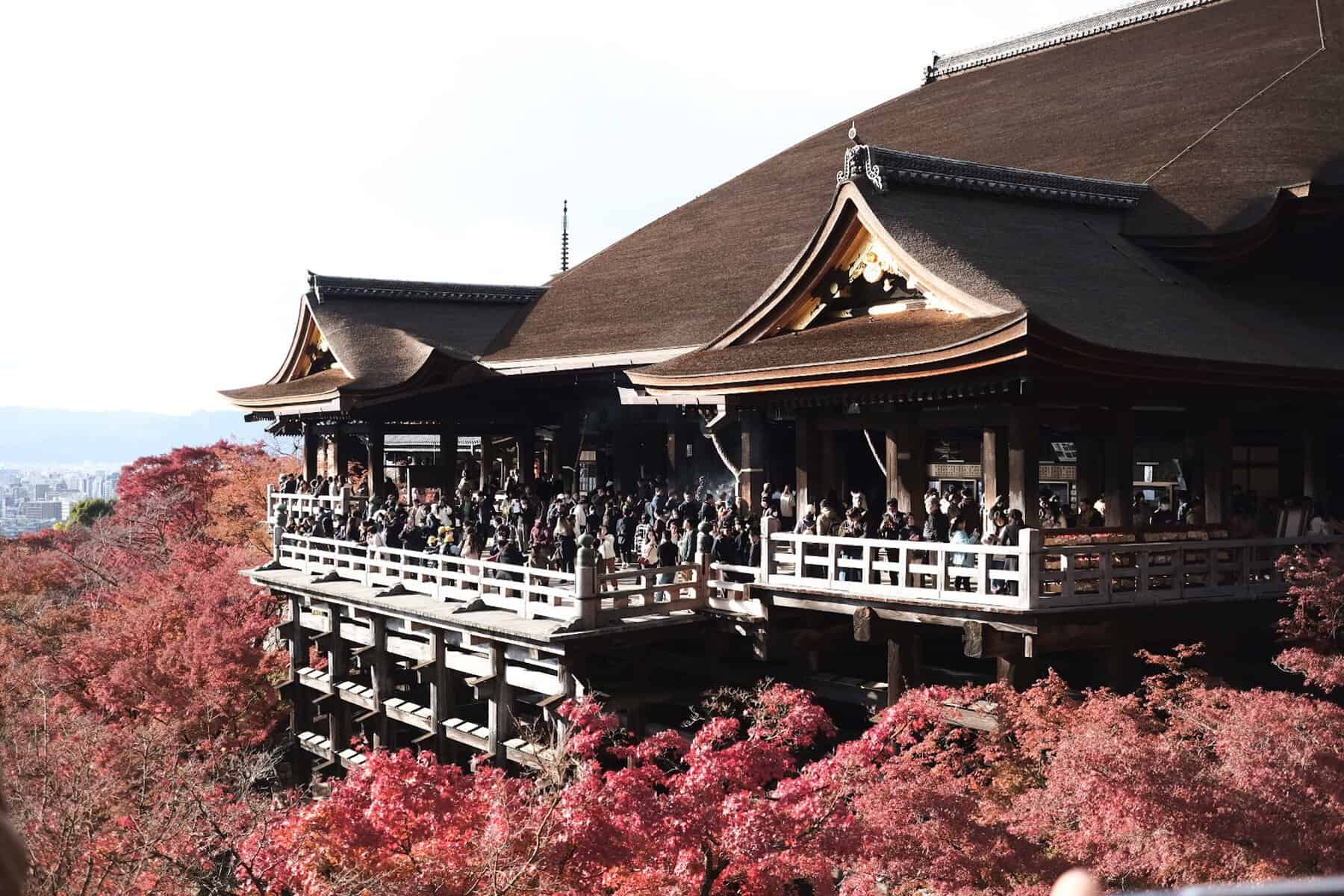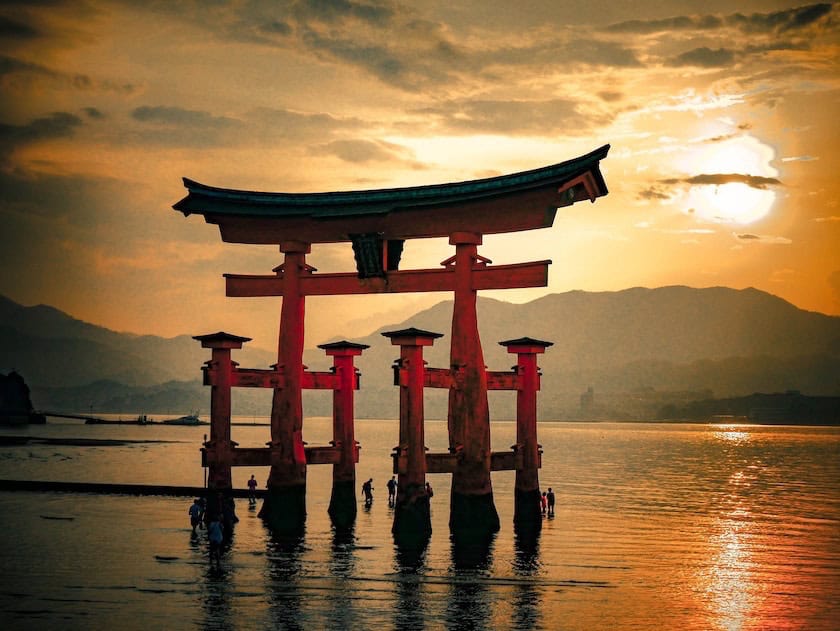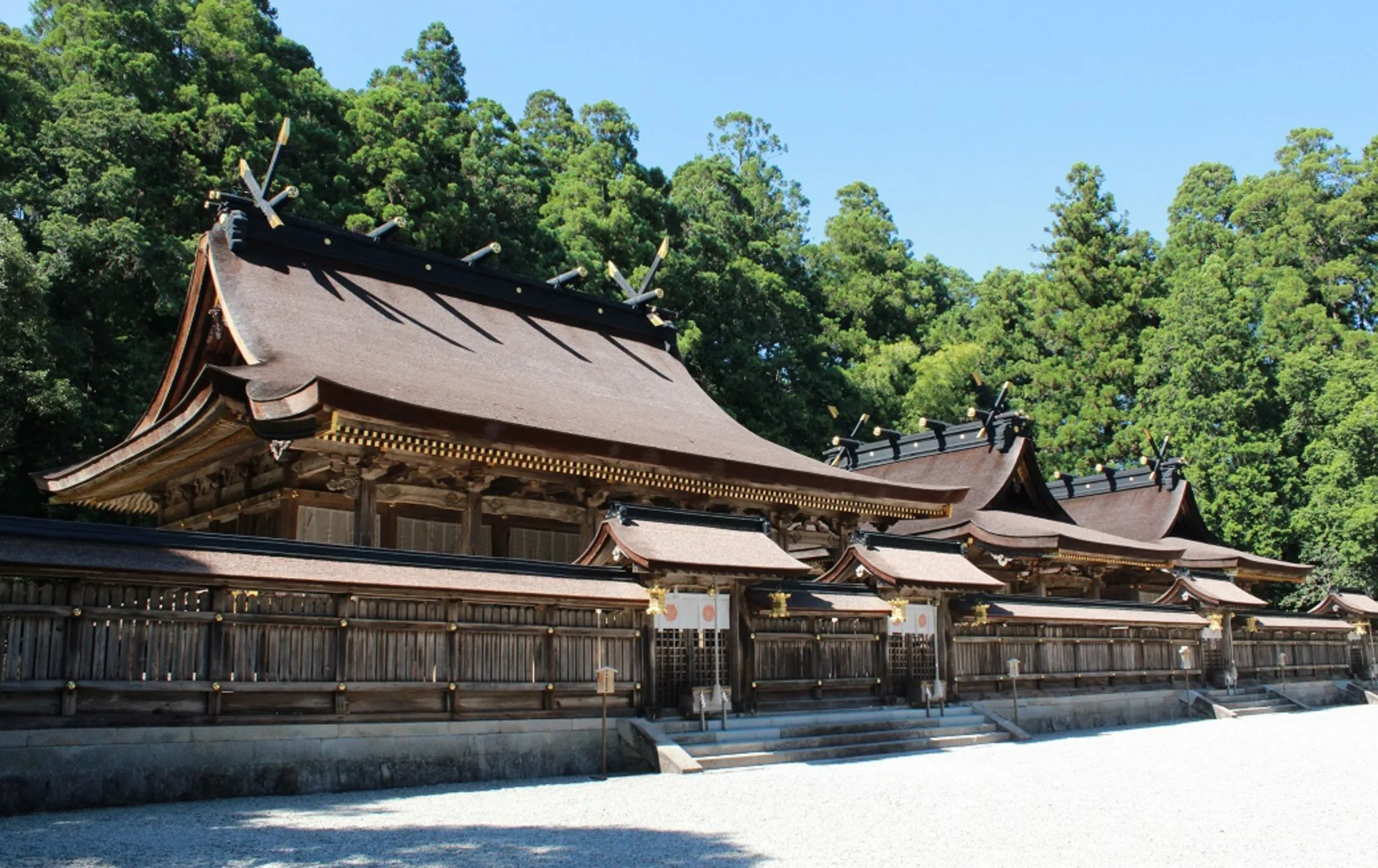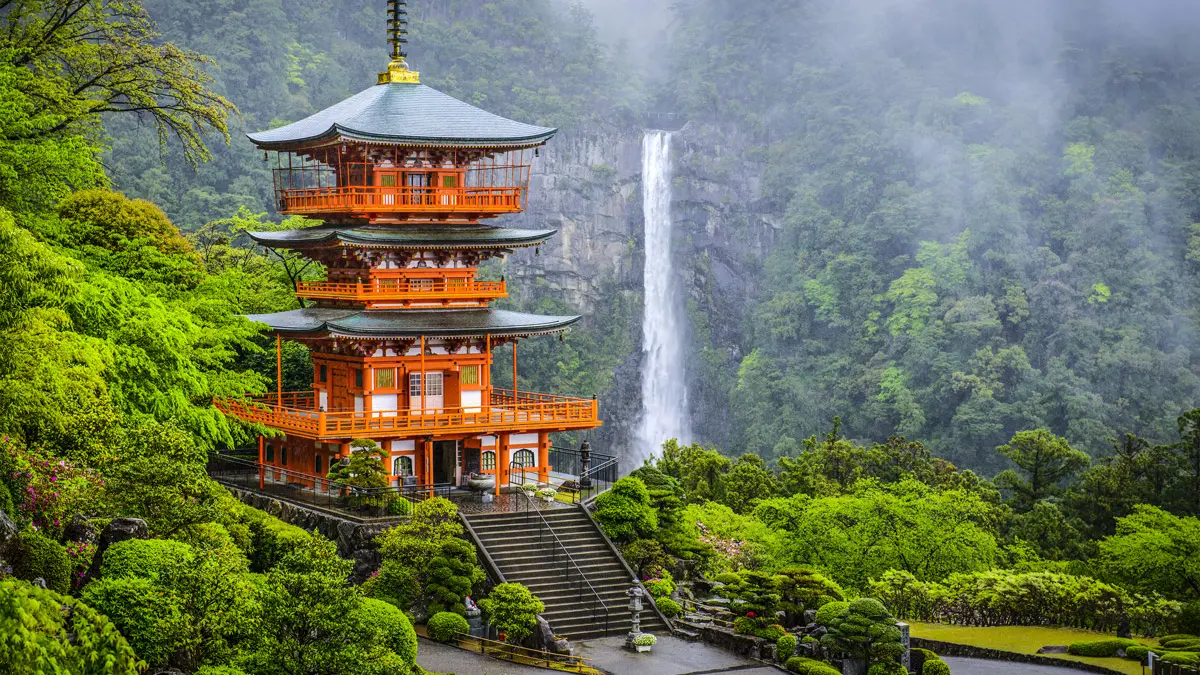Japan is home to a rich and vibrant culture, deeply rooted in spirituality and tradition. One of the most iconic aspects of Japanese culture is its sacred temples, which hold immense cultural and spiritual significance.
These temples are not only places of worship, but also serve as important historical and architectural landmarks. They offer visitors a glimpse into Japan’s ancient past and provide a serene and peaceful atmosphere for reflection and contemplation.
Japan’s sacred temples, including Kinkaku-ji (Golden Pavilion), Todai-ji (Great Eastern Temple), and Kiyomizu-dera, showcase exquisite architecture, serene gardens, and profound spiritual significance deeply rooted in Japanese culture and history.
The Best Time to Visit Japan’s Sacred Temples
When planning a visit to Japan’s sacred temples, it is important to consider the best time to go. The country experiences four distinct seasons, each offering its own unique charm.

Spring, with its cherry blossoms in full bloom, is a popular time to visit as the temples are surrounded by a sea of pink flowers. Autumn, on the other hand, is known for its vibrant foliage, creating a picturesque backdrop for temple visits.
To avoid crowds and fully enjoy the scenery, it is recommended to visit the temples early in the morning or during weekdays. Many tourists flock to popular temples during weekends and holidays, so visiting during off-peak times can provide a more peaceful and intimate experience.
Additionally, some temples offer special events or ceremonies during certain times of the year, so it is worth checking their schedules before planning your visit.
Kyoto’s Top Sacred Temples: A Brief Guide
Kyoto, the former capital of Japan, is home to some of the country’s most famous and revered temples. Kiyomizu-dera, with its wooden terrace overlooking the city, is a must-visit temple in Kyoto. It offers stunning views of cherry blossoms in spring and colorful foliage in autumn.

Fushimi Inari-taisha is another iconic temple known for its thousands of torii gates that lead up to Mount Inari. Exploring these temples can be a truly immersive experience, as they are not only places of worship but also offer insights into Japanese history and culture.
To make the most of your visit to Kyoto’s sacred temples, it is recommended to arrive early in the morning to avoid crowds. Some temples also offer guided tours or cultural experiences, such as tea ceremonies or Zen meditation sessions, which can provide a deeper understanding of the temple’s significance. It is also important to dress appropriately and be respectful of the temple’s rules and customs.
Exploring the Hidden Gems of Tokyo’s Sacred Temples
While Tokyo is known for its bustling cityscape and modern attractions, it is also home to several hidden gems in the form of sacred temples.
Senso-ji, located in the Asakusa district, is one of Tokyo’s oldest and most famous temples. Its vibrant red gate and bustling Nakamise shopping street make it a popular tourist destination.

Meiji Shrine, nestled in the heart of Tokyo’s bustling Shibuya district, offers a peaceful retreat from the city’s hustle and bustle.
To discover these hidden gems and experience a more authentic side of Tokyo, it is recommended to explore these temples during weekdays or early in the morning. This will allow you to avoid crowds and fully immerse yourself in the serene atmosphere.
Additionally, taking part in traditional rituals or ceremonies, such as writing wishes on ema (wooden plaques) or participating in a purification ritual, can provide a deeper understanding of Japanese spirituality.
Nara’s Sacred Temples: A Journey Back in Time
Nara, located just a short train ride from Kyoto, is home to some of Japan’s most ancient and historically significant temples.
Todai-ji, with its massive bronze Buddha statue, is one of Nara’s most iconic temples. It is also home to a large population of friendly deer that roam freely around the temple grounds.

Horyu-ji, on the other hand, is one of the oldest wooden structures in the world and houses a vast collection of Buddhist artifacts.
Visiting Nara’s sacred temples is like taking a journey back in time. These temples offer a glimpse into Japan’s ancient past and the role that Buddhism played in shaping its culture. To fully appreciate the historical significance of these temples, it is recommended to take a guided tour or hire a local guide who can provide insights into their history and cultural importance.
The Spiritual Significance of Mount Koya’s Sacred Temples
Located in Wakayama Prefecture, Mount Koya is one of Japan’s most sacred sites and a center of Japanese Buddhism. It is home to over 100 temples, including Kongobu-ji and Okunoin, which are considered to be among the most important temples in Japan.
Kongobu-ji serves as the headquarters of the Shingon sect of Buddhism and offers visitors a chance to experience traditional Buddhist rituals and practices.

Okunoin, on the other hand, is a cemetery that houses the mausoleum of Kobo Daishi, the founder of Shingon Buddhism.
Visiting Mount Koya’s sacred temples is not only a spiritual experience but also an opportunity to immerse oneself in the natural beauty of the surrounding area. The mountain is known for its lush forests and serene atmosphere, making it an ideal place for meditation and reflection.
To fully appreciate the spiritual significance of these temples, it is recommended to stay overnight at one of the temple lodgings (shukubo) and participate in morning prayers or meditation sessions.
The Enchanting Beauty of Hiroshima’s Sacred Temples
Hiroshima, known for its tragic history, is also home to several enchanting sacred temples. Itsukushima Shrine, located on Miyajima Island, is one of Japan’s most iconic landmarks.
The shrine’s Torii Gate, which appears to float on the water during high tide, is a symbol of Japan’s natural beauty.

Daisho-in, located at the base of Mount Misen, is another important temple in Hiroshima. It offers stunning views of the surrounding mountains and is known for its unique collection of Buddhist statues.
Visiting Hiroshima’s sacred temples is not only an opportunity to appreciate their beauty but also to learn about Japan’s history and culture. Itsukushima Shrine, in particular, holds great historical significance as it has been a place of worship for over 1,400 years. To fully immerse yourself in the enchanting beauty of these temples, it is recommended to visit during low tide when you can walk up close to the torii gate and explore the surrounding area.
Discovering the Mysteries of Shikoku’s Sacred Temples
Shikoku, Japan’s fourth-largest island, is home to the Shikoku Pilgrimage, a 1,200-kilometer route that connects 88 temples. This pilgrimage is considered one of the most important spiritual journeys in Japan and attracts thousands of pilgrims each year. The temples along the route offer a unique insight into Japanese Buddhism and provide a chance for self-reflection and spiritual growth.
Embarking on the Shikoku Pilgrimage is not only a physical challenge but also a deeply spiritual experience. The route takes pilgrims through scenic landscapes, including mountains, forests, and coastal areas.
Each temple has its own unique charm and significance, and visiting all 88 temples can take several weeks or even months. To fully appreciate the mysteries of Shikoku’s sacred temples, it is recommended to take your time and immerse yourself in the journey.
A Pilgrimage to Kumano Kodo’s Sacred Temples
Kumano Kodo, located in the Kii Peninsula, is another important pilgrimage route in Japan. It is part of the UNESCO World Heritage site “Sacred Sites and Pilgrimage Routes in the Kii Mountain Range” and is considered one of the most sacred places in Japan. The route connects three grand shrines: Kumano Hongu Taisha, Kumano Nachi Taisha, and Kumano Hayatama Taisha.

Embarking on the Kumano Kodo pilgrimage is not only a physical challenge but also a chance to connect with nature and experience the spiritual significance of these sacred temples.
The route takes pilgrims through dense forests, picturesque valleys, and ancient villages, offering a unique opportunity to immerse oneself in Japan’s natural beauty. To fully appreciate the cultural and spiritual significance of this pilgrimage, it is recommended to take your time and explore the surrounding area.
The Art and Architecture of Japan’s Sacred Temples
One of the most striking aspects of Japan’s sacred temples is their unique art and architecture. From intricate wood carvings to vibrant paintings, these temples are a testament to Japan’s rich artistic heritage. Each temple has its own distinct style and features, reflecting different periods in Japanese history.
Traditional Japanese temple architecture is characterized by its simplicity, harmony with nature, and attention to detail. The use of natural materials, such as wood and stone, creates a sense of warmth and tranquility. The art found in these temples often depicts religious figures, mythical creatures, or scenes from Buddhist scriptures. These artworks not only serve as decorative elements but also convey important spiritual messages.
Practical Tips for Visiting Japan’s Sacred Temples: Dos and Don’ts
When visiting Japan’s sacred temples, it is important to be respectful of the customs and traditions associated with these places of worship. Here are some practical tips to keep in mind:
1. Dress appropriately: Many temples have dress codes that require visitors to cover their shoulders and knees. It is recommended to wear modest clothing that is comfortable and easy to move in.
2. Remove your shoes: In Japan, it is customary to remove your shoes before entering a temple or any other traditional building. Be sure to bring a pair of socks or slippers to wear inside.
3. Be mindful of your behavior: Temples are places of worship and should be treated with respect. Avoid loud conversations, refrain from taking photos in prohibited areas, and be mindful of your actions.
4. Follow the rules: Each temple has its own set of rules and regulations. Be sure to read and follow any signs or instructions posted at the entrance or inside the temple.
5. Don’t touch or disturb the artifacts: Many temples house valuable artifacts and artworks. It is important not to touch or disturb these items, as they are often fragile and of great historical or cultural significance.
When planning your visit to Japan’s sacred temples, it is also important to consider practical considerations such as transportation and accommodations. Japan has an extensive public transportation system, including trains, buses, and taxis, which can make getting around relatively easy. It is recommended to purchase a Japan Rail Pass if you plan on traveling extensively by train.
In terms of accommodations, there are a variety of options available, ranging from traditional ryokans (Japanese inns) to modern hotels. Staying at a temple lodging (shukubo) can provide a unique and immersive experience, allowing you to fully immerse yourself in the spiritual atmosphere of the temple.
In conclusion, Japan’s sacred temples offer visitors a unique opportunity to explore the country’s rich cultural and spiritual heritage. Whether you are interested in history, art, or simply seeking a moment of tranquility, these temples provide a serene and peaceful environment for reflection and contemplation. By following respectful temple etiquette and being mindful of the customs and traditions associated with these places of worship, you can have a truly memorable experience exploring Japan’s sacred temples.

Leave a Reply